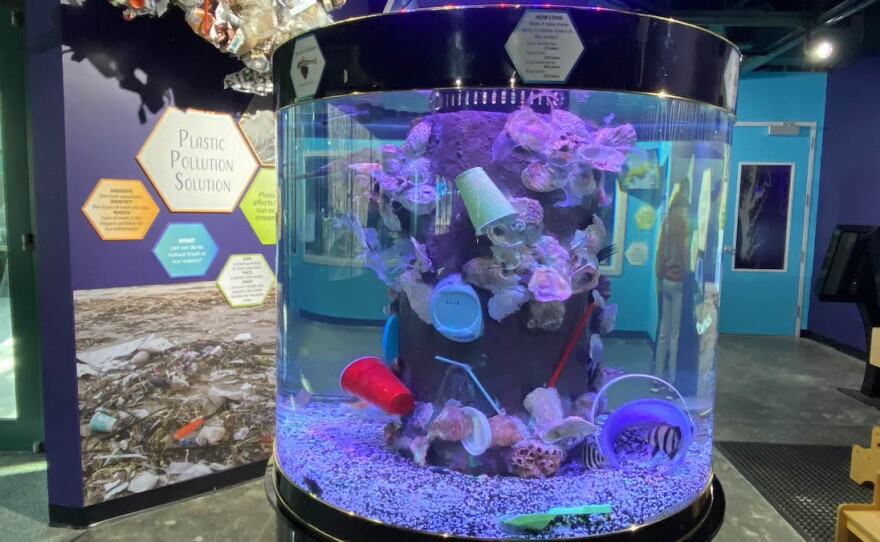The Virginia Living Museum in Newport News has long worked on ways to reduce energy use and protect the local environment.
To that end, the museum has rooftop solar panels, trash pickup events and raises some animal species. But a lot of the work happens behind the scenes, said education director Rachel Riesbeck.
The museum’s newest exhibit aims to put conservation front and center, highlighting its own efforts while educating people about serious global environmental threats. The Conservation Command Center exhibit opened last month and discusses plastic pollution, climate change and losses to habitat and biodiversity, Riesbeck said.
She said officials tried to put a local lens on the topics.
“We focus on the things that are happening and affecting our community,” she said. “The gallery is a way to interactively learn about some of those challenges that the earth faces and then what action you can take to help mitigate those threats.”
Curators tailored the exhibit to children ages 8 to 12, hoping to engage them with the issues early in life and help instill sustainable practices. The exhibit teaches children how to choose plastic-free items to store their lunches and reduce overall reliance on single-use plastics.
The first element is a fish tank full of native species and trash to show the impacts of increased plastic pollution.
Another section of the gallery focuses on renewable energy. Guests can take an interactive quiz to learn about how their daily choices connect to climate challenges — such as how eating beef has a larger carbon footprint than other diet options. Visitors also can play with a sand table that simulates the marine environment and peek into the museum’s seahorse nursery.
Riesbeck said they’ve long raised seahorses to use in their aquariums and trade the creatures with other zoos and aquariums. That helps ensure a genetically diverse population while preventing the need to take seahorses from the wild.
Riesbeck said she hopes the exhibit is just a starting point for visitors. She’d like to see people inspired to take action, both on an individual level and through the living museum’s programs.



